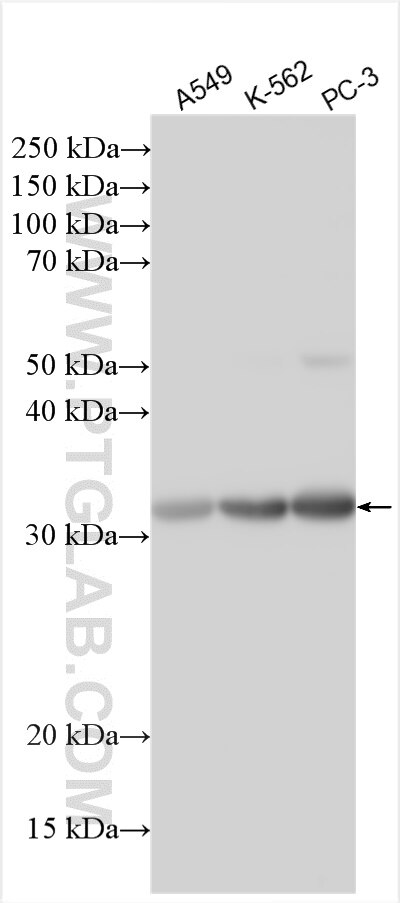Tested Applications
| Positive WB detected in | A549 cells, K-562 cells, PC-3 cells |
Recommended dilution
| Application | Dilution |
|---|---|
| Western Blot (WB) | WB : 1:500-1:1000 |
| It is recommended that this reagent should be titrated in each testing system to obtain optimal results. | |
| Sample-dependent, Check data in validation data gallery. | |
Product Information
30013-1-AP targets CD200R1 in WB, ELISA applications and shows reactivity with Human samples.
| Tested Reactivity | Human |
| Host / Isotype | Rabbit / IgG |
| Class | Polyclonal |
| Type | Antibody |
| Immunogen |
Recombinant protein Predict reactive species |
| Full Name | CD200 receptor 1 |
| Observed Molecular Weight | 33-36 kDa |
| GenBank Accession Number | BC069743 |
| Gene Symbol | CD200R1 |
| Gene ID (NCBI) | 131450 |
| RRID | AB_3086210 |
| Conjugate | Unconjugated |
| Form | Liquid |
| Purification Method | Antigen affinity purification |
| UNIPROT ID | Q8TD46 |
| Storage Buffer | PBS with 0.02% sodium azide and 50% glycerol, pH 7.3. |
| Storage Conditions | Store at -20°C. Stable for one year after shipment. Aliquoting is unnecessary for -20oC storage. 20ul sizes contain 0.1% BSA. |
Background Information
Cell surface glycoprotein CD200 receptor 1 (CD200R1) is also named as CD200R, CRTR2, MOX2R and OX2R, and belongs to the CD200R family. CD200R1 is inhibitory receptor for the CD200/OX2 cell surface glycoprotein. CD200R1 is highly glycosylated, containing ten potential N-glycosylation sites (PMID: 15187158). CD200R1 limits inflammation by inhibiting the expression of pro-inflammatory molecules including TNF-alpha, interferons, and inducible nitric oxide synthase (iNOS) in response to selected stimuli. As an immune inhibitory molecule, CD200R1 binds to CD200, ultimately leading to inhibition of classical activation of macrophages and microglia (PMID: 24588829).
Protocols
| Product Specific Protocols | |
|---|---|
| WB protocol for CD200R1 antibody 30013-1-AP | Download protocol |
| Standard Protocols | |
|---|---|
| Click here to view our Standard Protocols |




